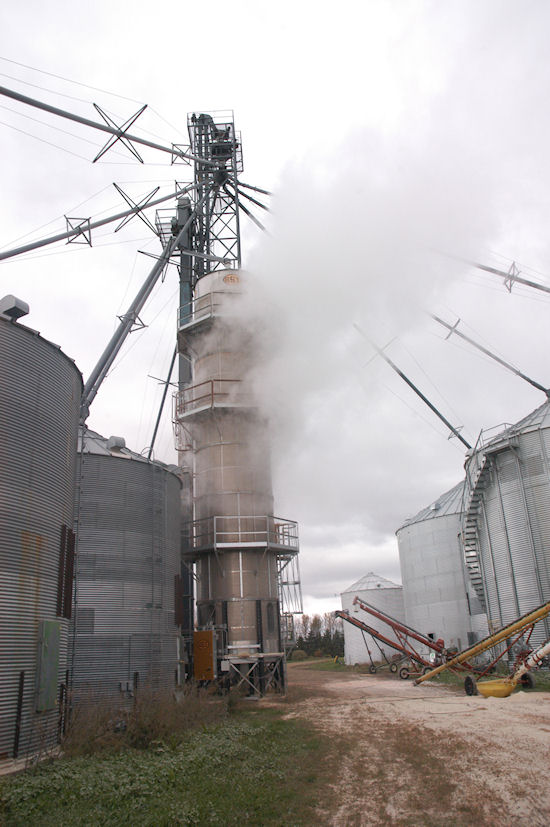
Farmers are used to waiting in line at harvest to dump grain at the elevator. But growers are also facing lines in some areas if they need propane to dry down corn thanks to a perfect storm of cold weather and a wet crop.
The problem, once again, isn’t with supply. Propane production this fall is up nearly 7% and inventories are 19% higher than a year ago nationwide. But getting fuel from storage hubs to dealers where it’s needed has again exposed a supply chain for farmers that seems to follow Murphy’s law. If something can go wrong, it will.
This fall a combination of a wet crop due to late planting increased demand just as an early cold snap looks ready to blanket the Midwest in November, following two major winter storms in October. The situation is reminiscent of what happened during the “polar vortex six years ago. Extremely cold temperatures snarled the transportation system needed to move fuel to keep homes warm, sending prices skyrocketing.
To be sure, prices are far cheaper now, after trading down near 17-year lows this summer. Still, wholesale prices at the Conway, Kansas hub are up 70% from those bargain basement levels.
The slow pace of harvest has also supported diesel costs at a time when they’re normally starting to ease as combines get put away for another year. On average, cash wholesale prices for ULSD bottom in December. Since October they’ve held in a 10-cent range as Midwest inventories continue to tighten.
Diesel inventories fell again in the Midwest last week on ag demand. But stocks are still higher than they were at harvest bottoms the last two years. As a result, basis – the difference between cash fuel and futures delivered in New York Harbor – is more than eight cents a gallon cheaper than average.
Both diesel and propane follow crude oil as a rule of thumb. Last year crude oil prices surged to the highest level since 2014 – that polar vortex year again – amid fears of tighter supplies triggered in part by sanctions on Iran. Some analysts touted potential for futures to trade back to $100 a barrel.
That house of cards collapsed quickly, selling accelerated by a downturn in the stock market that forced investors to bail out of risky assets. Crude plunged below $30 a barrel, dragging down the rest of the petroleum complex with it.
Crude oil sold off today after the government reported rising inventories on near-record production, slowing exports and weaker gasoline demand. Crude settled around $56.50, which seems fairly valued considering what we know about market fundamentals of supply and demand.
Crude’s range has continued to narrow over the past year. If that continues, futures could trade in a range from $51.55 to $61.60 in the near-term. But with normal volatility over the winter that range could expand to $48 to $65, more if a “black swan” event occurs. Growers should be waiting for the downside of those ranges to start booking spring diesel needs.
Ethanol stocks rose last week after six weeks of rising production. Weaker gasoline demand seasonally means less is needed for blending, making exports the swing factor.
With ethanol production down around 5% so far this fall, USDA may again trim its forecast Friday for corn usage to make the biofuel. Ethanol prices slumped today, which should put margins at plants under a little more pressure after their comeback recently.
Click the download button below for more charts and information.
Senior Editor Bryce Knorr first joined Farm Futures Magazine in 1987. In addition to analyzing and writing about the commodity markets, he is a former futures introducing broker and is a registered Commodity Trading Adviser. He conducts Farm Futures exclusive surveys on acreage, production and management issues and is one of the analysts regularly contracted by business wire services before major USDA crop reports. Besides the Morning Call on www.FarmFutures.com he writes weekly reviews for corn, soybeans, and wheat that include selling price targets, charts and seasonal trends. His other weekly reviews on basis, energy, fertilizer and financial markets and feature price forecasts for key crop inputs. A journalist with 38 years of experience, he received the Master Writers Award from the American Agricultural Editors Association.
About the Author(s)
You May Also Like






